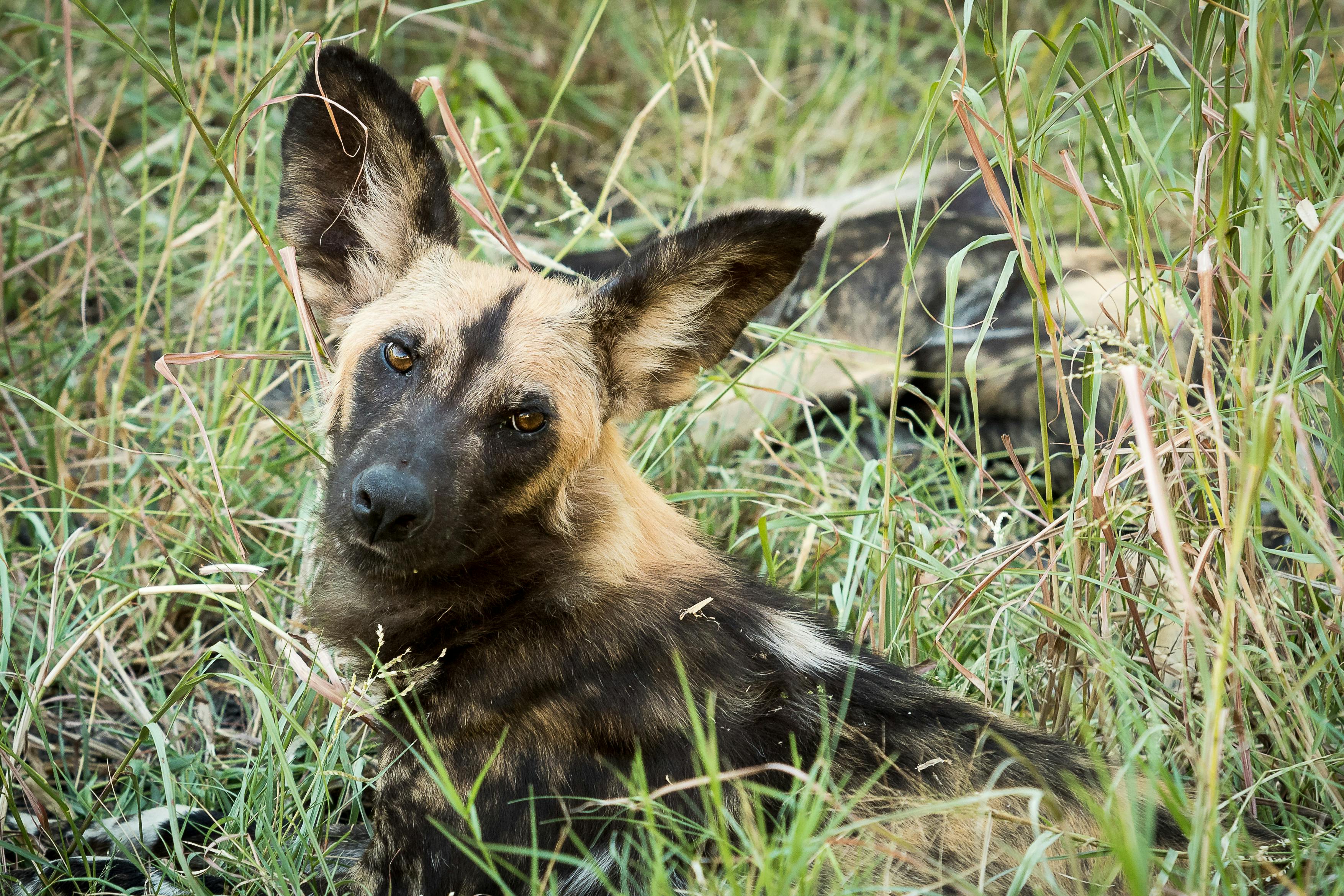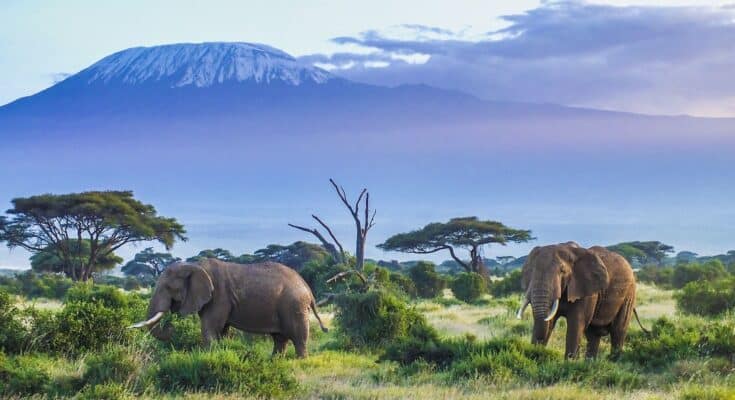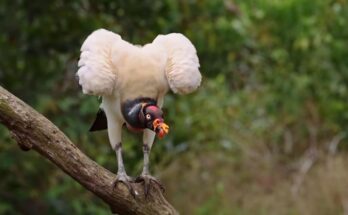Wildlife is full of amazing surprises. There are many facts that can astonish you.
Our planet is home to countless species of animals, each with its own unique behaviors and characteristics. Some animals have abilities that seem almost magical. Others have strange habits that defy logic. These surprising facts about wildlife not only spark curiosity but also deepen our appreciation for nature.
From the tiny insects to the majestic elephants, the world of wildlife is full of wonders. Learning about these creatures can offer new perspectives on life and the intricate web of ecosystems. Prepare to be amazed by some unexpected and fascinating facts about the animal kingdom. Let’s dive into the wild and discover the extraordinary!

Mysterious Animal Behaviors
Wildlife never ceases to amaze us with its strange and mysterious behaviors. From unusual mating rituals to strange feeding habits, animals exhibit fascinating traits that leave us in awe. Let’s dive into some of these surprising facts about wildlife.
Unusual Mating Rituals
Many animals have unique and elaborate mating rituals. These rituals often involve complex dances, displays of color, or even gift-giving. For example, the Bowerbird is known for its intricate mating ritual. The male builds a beautiful structure, or bower, decorated with colorful objects. The female then inspects the bower and decides if the male is a suitable mate based on his craftsmanship.
Another example is the Peacock. The male displays his magnificent tail feathers, fanning them out to catch the sunlight. This dazzling display is meant to attract a female. The brighter and more colorful the feathers, the more likely he is to win a mate.
Strange Feeding Habits
Some animals have developed strange feeding habits to survive in their environments. The Star-Nosed Mole is one such creature. This mole has a star-shaped nose with 22 fleshy appendages. These appendages help it detect and eat food quickly in the dark underground.
Another example is the Komodo Dragon. It has a very slow metabolism and can eat up to 80% of its body weight in one meal. This allows it to go for weeks without needing to hunt again. Komodo Dragons have a unique way of feeding that ensures they survive in their harsh environments.
Check out the table below for a quick overview:
| Animal | Mating Ritual | Feeding Habit |
|---|---|---|
| Bowerbird | Builds and decorates bowers | Feeds on fruits and insects |
| Peacock | Displays colorful tail feathers | Omnivorous |
| Star-Nosed Mole | N/A | Uses star-shaped nose to find food |
| Komodo Dragon | N/A | Can eat up to 80% of body weight |
These mysterious behaviors are just the tip of the iceberg. Wildlife is full of wonders, and there is always something new to discover.

Remarkable Adaptations
Wildlife is full of incredible surprises, especially in how animals adapt to their surroundings. These remarkable adaptations help them survive in different environments. Below, we explore some fascinating examples.
Camouflage Techniques
Many animals use camouflage to blend into their environment. Chameleons can change their color to match their surroundings. This helps them hide from predators. Arctic foxes have white fur in winter and brown in summer. This makes them hard to spot in the snow and on the ground. Some insects look like leaves or sticks. This helps them avoid being eaten by birds.
Extreme Survival Skills
Some animals can survive in extreme conditions. The tardigrade, a tiny water creature, can live in boiling water. It can also survive in the vacuum of space. Polar bears have thick fur and a layer of fat. This keeps them warm in freezing temperatures. Camels can go for days without water. They store fat in their humps to use as energy.
Record-breaking Wildlife
Wildlife is full of surprises. Some animals defy expectations with their extraordinary abilities and features. From the largest to the smallest, and those that travel the greatest distances, these record-breaking species capture our imagination. Let’s explore some of the most fascinating examples.
Largest And Smallest Species
The animal kingdom boasts a remarkable range of sizes. The blue whale holds the title of the largest animal. It can grow up to 100 feet long and weigh as much as 200 tons. On the other end of the spectrum, we have the Bee Hummingbird. This tiny bird measures just over 2 inches and weighs less than a dime.
Here’s a quick comparison:
| Animal | Size | Weight |
|---|---|---|
| Blue Whale | Up to 100 feet | 200 tons |
| Bee Hummingbird | Just over 2 inches | Less than a dime |
Longest Migrations
Migration is a marvel of the natural world. The Arctic Tern holds the record for the longest migration. This small bird travels from the Arctic to the Antarctic and back each year. The journey covers about 25,000 miles.
Another impressive traveler is the Humpback Whale. These giants migrate up to 5,000 miles each year. They move from their feeding grounds in polar waters to their breeding grounds in tropical waters.
Here are some details:
- Arctic Tern: 25,000 miles annually
- Humpback Whale: 5,000 miles annually
These record-breaking migrations show the incredible endurance of these animals.

Unique Communication Methods
Wildlife communication is a fascinating aspect of the animal kingdom. Different species have unique ways to share information. These methods often seem surprising to us. Let’s explore some of these unique communication methods.
Animal Languages
Many animals have their own languages. Dolphins use clicks and whistles. They can even call each other by unique names. Birds sing songs with different melodies. Each song can mean something different. Prairie dogs have a complex language. They use various sounds to warn about predators.
Signaling And Displays
Animals use visual signals to communicate. Peacocks display their feathers to attract mates. The bright colors show their health. Fireflies use light to find partners. Each species has its own light pattern. Bees perform a “waggle dance” to show where food is. The dance direction and length tell others where to go.
These unique methods help animals survive and thrive. Their communication methods are both diverse and fascinating.
Unexpected Animal Intelligence
Wildlife is full of surprises. Especially when it comes to animal intelligence. Many animals show skills that we once thought were unique to humans. Let’s dive into some amazing examples.
Tool Use
Many animals use tools to solve problems. Some birds, like crows, use sticks to get insects out of tree bark. They also drop nuts on roads to crack them open.
Chimpanzees are famous for their tool use. They use rocks to crack open nuts and sticks to fish for termites. Even sea otters use rocks to open shellfish.
Problem-solving Abilities
Problem-solving skills in animals can be quite impressive. Dolphins use teamwork to catch fish. They create a circle of mud to trap fish, making them easy to catch.
Octopuses are known for their cleverness. They can open jars to get food inside. They even use coconut shells to hide from predators.
Elephants display great memory and problem-solving skills. They can remember the location of water sources and use branches to swat flies. Elephants also show empathy and help each other in times of need.
These examples show that animal intelligence is more advanced than many people realize. From birds to sea creatures, the animal kingdom is full of smart problem solvers.
Unusual Wildlife Relationships
Wildlife never ceases to amaze us with its unique relationships. Some animals form unlikely bonds that can leave us in awe. These unusual wildlife relationships showcase nature’s diversity and creativity. Let’s explore some of these fascinating connections.
Symbiotic Partnerships
Symbiotic relationships occur when two species benefit from each other. One famous example is the clownfish and the sea anemone. The clownfish lives among the anemone’s tentacles, gaining protection from predators. In return, the clownfish cleans the anemone and provides nutrients through its waste.
Another example is the oxpecker bird and large mammals like rhinos. The oxpecker eats ticks and parasites off the mammals’ skin. This helps keep the mammals healthy. The bird also gets a steady food source. Both benefit from this partnership.
Unlikely Friendships
Unlikely friendships between different species can be heartwarming. For instance, a dog and a deer can become inseparable friends. These unusual bonds often form in sanctuaries or rescue centers. The animals comfort and support each other.
Another touching example is the friendship between a lion, a tiger, and a bear. These three predators live together peacefully in a sanctuary. They were rescued as cubs and have grown up together. Their bond shows that even natural rivals can form deep connections.
Rare And Endangered Species
Wildlife is full of wonders. Some animals are so rare that many people never see them. These rare and endangered species face many threats. From habitat loss to poaching, their numbers are dwindling. Conservation efforts are crucial to save these animals from extinction.
Conservation Efforts
Many organizations and governments work to protect endangered species. They create protected areas like national parks and wildlife reserves. They also enforce laws against poaching and illegal trade. Awareness campaigns educate people about the importance of wildlife conservation.
- Creating protected areas
- Enforcing anti-poaching laws
- Raising awareness
- Supporting breeding programs
Success Stories
There have been many success stories in wildlife conservation. The giant panda, once critically endangered, has seen its numbers increase. Thanks to dedicated conservation efforts, its status has improved to “vulnerable”.
The American bald eagle was once on the brink of extinction. Today, its population has rebounded thanks to strong conservation laws and habitat protection.
| Species | Previous Status | Current Status | Conservation Efforts |
|---|---|---|---|
| Giant Panda | Critically Endangered | Vulnerable | Protected areas, breeding programs |
| American Bald Eagle | Endangered | Least Concern | Habitat protection, legal protection |
Fascinating Wildlife Habitats
Wildlife habitats are as diverse as the creatures that inhabit them. These natural environments range from the icy Arctic tundra to dense, green rainforests. Each habitat supports unique species that adapt to their surroundings. Let’s explore some fascinating wildlife habitats that might surprise you.
Extreme Environments
Some animals thrive in extreme conditions. The Sahara Desert, for example, is home to the resilient fennec fox. It has large ears to dissipate heat. The Arctic tundra hosts polar bears that have thick fur and a layer of fat. They survive in temperatures as low as -50°C. Deep in the ocean, the Mariana Trench houses creatures like the anglerfish. It lives in complete darkness and high pressure.
Secretive Ecosystems
Many animals live in hidden or hard-to-reach places. The cloud forests of Central America are home to the elusive quetzal bird. It prefers high-altitude forests with heavy moisture. The Congo Basin, a dense rainforest, shelters the secretive okapi. It resembles a mix between a zebra and a giraffe. Caves are also secretive ecosystems. They house bats and cavefish that have adapted to life without sunlight.
Frequently Asked Questions
What Are Some Unusual Wildlife Behaviors?
Some animals exhibit surprising behaviors, like the mimic octopus copying other sea creatures. Another example is the lyrebird, which mimics various sounds, including chainsaws.
How Do Animals Adapt To Urban Environments?
Wildlife adapts to cities in fascinating ways. Raccoons open trash cans, while peregrine falcons nest on skyscrapers. These adaptations help them survive.
Which Animals Use Tools?
Some animals, like chimpanzees, use sticks to gather food. Sea otters crack open shells with rocks. Tool use is rare but remarkable.
Do Animals Communicate In Complex Ways?
Yes, many animals have sophisticated communication methods. Dolphins use clicks and whistles, while bees perform dances to relay information about food sources.
Conclusion
Wildlife holds many surprises and mysteries. Learning about them can be fascinating. Animals have unique behaviors and traits. These facts remind us how amazing nature is. They show the importance of preserving wildlife. Every species plays a vital role in ecosystems.
Understanding wildlife helps us appreciate our world more. So, keep exploring and discovering. The natural world is full of wonders waiting to be found. Let’s protect and cherish it for future generations.



